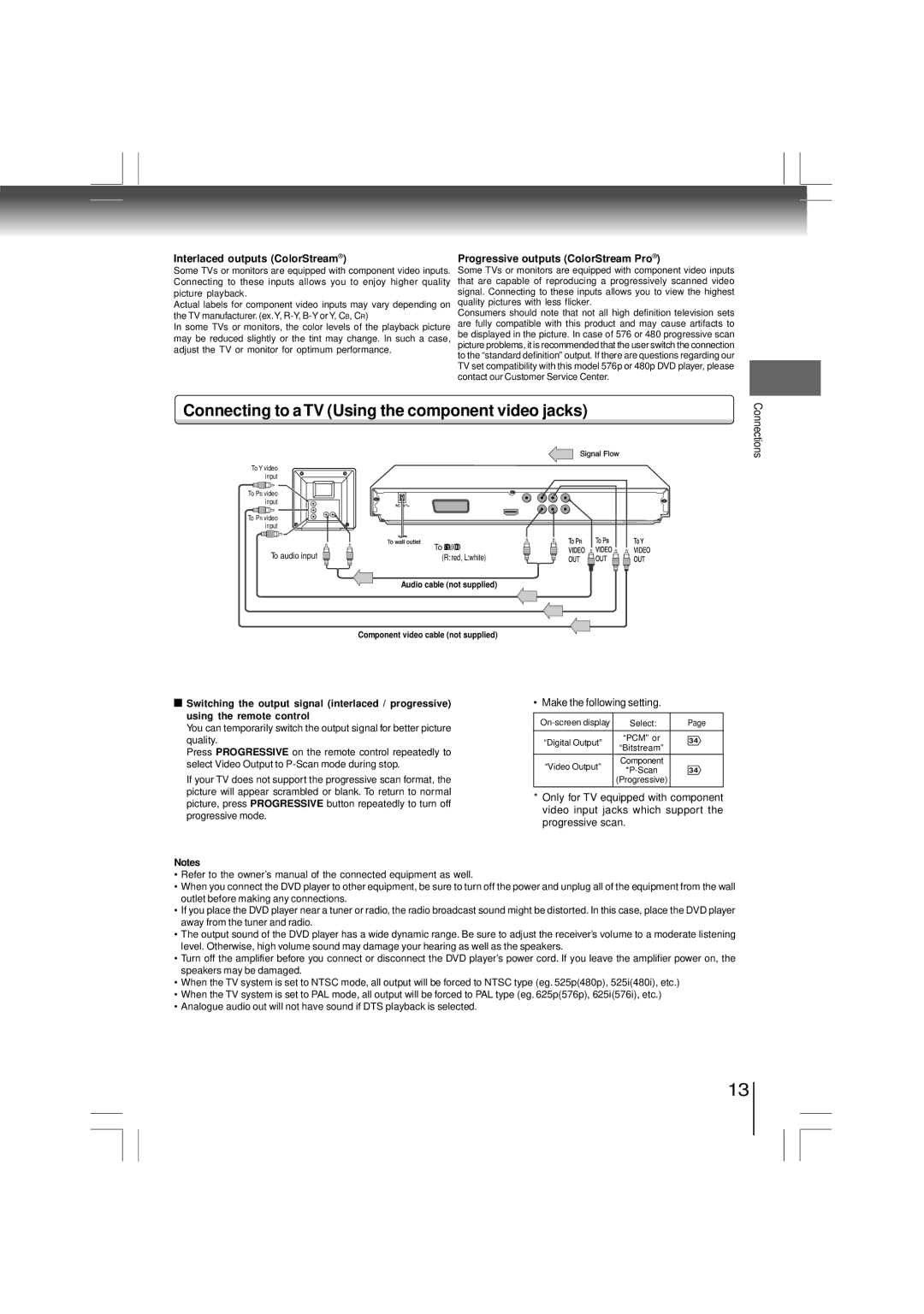
Connections
Interlaced outputs (ColorStream® )
Some TVs or monitors are equipped with component video inputs. Connecting to these inputs allows you to enjoy higher quality picture playback.
Actual labels for component video inputs may vary depending on the TV manufacturer. (ex.Y,
In some TVs or monitors, the color levels of the playback picture may be reduced slightly or the tint may change. In such a case, adjust the TV or monitor for optimum performance.
Progressive outputs (ColorStream Pro® )
Some TVs or monitors are equipped with component video inputs that are capable of reproducing a progressively scanned video signal. Connecting to these inputs allows you to view the highest quality pictures with less flicker.
Consumers should note that not all high definition television sets are fully compatible with this product and may cause artifacts to be displayed in the picture. In case of 576 or 480 progressive scan picture problems, it is recommended that the user switch the connection to the “standard definition” output. If there are questions regarding our TV set compatibility with this model 576p or 480p DVD player, please contact our Customer Service Center.
Connecting to a TV (Using the component video jacks)
Connections
To Y video input
To PB video input
To PR video input
To audio input
To 2ch AUDIO OUT
(R: red, L:white)
Audio cable (not supplied)
Component video cable (not supplied)
Switching the output signal (interlaced / progressive) using the remote control
You can temporarily switch the output signal for better picture quality.
Press PROGRESSIVE on the remote control repeatedly to select Video Output to
If your TV does not support the progressive scan format, the picture will appear scrambled or blank. To return to normal picture, press PROGRESSIVE button repeatedly to turn off progressive mode.
• Make the following setting.
Select: | Page | ||
“Digital Output” | “PCM” or | 34 | |
“Bitstream” | |||
|
| ||
“Video Output” | Component |
| |
34 | |||
| |||
| (Progressive) |
|
*Only for TV equipped with component video input jacks which support the progressive scan.
Notes
•Refer to the owner’s manual of the connected equipment as well.
•When you connect the DVD player to other equipment, be sure to turn off the power and unplug all of the equipment from the wall outlet before making any connections.
•If you place the DVD player near a tuner or radio, the radio broadcast sound might be distorted. In this case, place the DVD player away from the tuner and radio.
•The output sound of the DVD player has a wide dynamic range. Be sure to adjust the receiver’s volume to a moderate listening level. Otherwise, high volume sound may damage your hearing as well as the speakers.
•Turn off the amplifier before you connect or disconnect the DVD player’s power cord. If you leave the amplifier power on, the speakers may be damaged.
•When the TV system is set to NTSC mode, all output will be forced to NTSC type (eg. 525p(480p), 525i(480i), etc.)
•When the TV system is set to PAL mode, all output will be forced to PAL type (eg. 625p(576p), 625i(576i), etc.)
•Analogue audio out will not have sound if DTS playback is selected.
13
